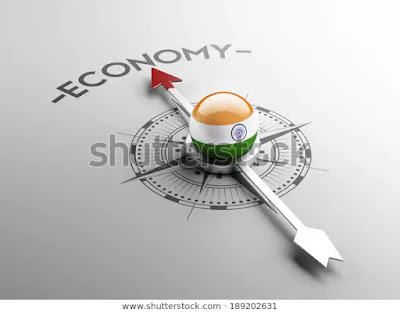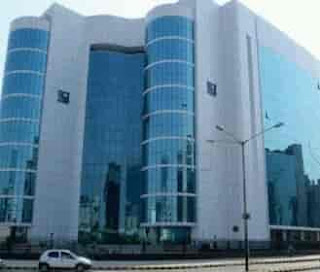INDIAN ECONOMY STAGE 2 AFTER INDEPENDENCE (1950-1990) UGC NET,UPSC AND OTHER COMPETITIVE EXAM
 |
| Indian Economy |
Post-freedom perhaps the greatest test the Indian chiefs and government confronted was the condition of the Indian Economy. Thus they set up the arrangement of the Multi Year Plans. In the following four decades, they realized precise changes to farming, exchange, and industry.
Economy
Indian Economy after Autonomy
In the post-autonomy period, the pioneers of the nation had some unsafe choices to take. One of them was which sort of monetary model would India follow? In those occasions there were two models followed by most nations on the planet – industrialist economy and communist economy.
Our first PM Jawaharlal Nehru favored the communist model. In any case, in a popular government like India, an unadulterated communist economy can not prosper. Private enterprise was likewise not fit since the legislature needed to develop an economy and care for the regular man and his needs. So as an answer our economy joined parts of both communism and private enterprise.
It was concluded India would build up a solid communist society, where the open segment would deal with its residents. In any case, the administration would likewise advance and support a solid private part for what's to come. There would be no forbiddance on private property or riches keeping our vote based system in mind.So india follow the approach of Blended Economy.
Blended Economy
A blended economy is an ideal marriage between a direction economy and a free market economy. Along these lines, all things considered, the economy is liberated from government mediation. Be that as it may, the legislature will control and manage explicit delicate territories of the economy like transportation, open administrations, safeguard and so forth. Such an economy is known as a double economy. The best instances of such a blended economy are India and France.
Such a blended economy permits private organizations the opportunity to work in the economy with least oversight. Simultaneously, the administration can direct the economy so it doesn't unfavorably influence the open interests. Both open segment and private part can exist together calmly in one economy. It is the ideal mix of communism and private enterprise. Truth be told, most economies of the world are as of now considered as blended economies.
Monetary advancement
Another significant test india needs to confront was Monetary Development.So to encourage development india began five yr plan.
Multi Year Plan
A monetary arrangement designates the assets of a country to satisfy the general and explicit objectives as arranged by the legislature for a predefined period. In India, these plans are made for a long time and consequently are known as multi year plans. These multi year plans are eventually a transient arrangement for a point of view plan. A point of view plan plots the long haul objectives of a country, crossing twenty years.
In India, after the autonomy, the administration set up an Arranging Commision in 1950. This commission would be liable for confining and executing the multi year plans of the nation. They started their endeavors with the initial multi year plan in 1950.
Target of multi year plan
Development
This is the first and the most fundamental objective of a financial arrangement. Development as far as an economy centers around the expansion of the Total national output (Gross domestic product) of the nation. Gross domestic product is an approach to gauge the development of an economy. Higher the Gross domestic product more the normal open can profit by the monetary arrangements of the nation.
This financial development really occurs because of an expansion in the generation limit of a country for either its products or its administrations. This can be because of a deluge of capital into the economy too. The segment where the development is going on is additionally significant. There are three essential areas – farming, modern and administration. Their particular commitments make up the auxiliary structure of the Gross domestic product.
For a lot of years India's essential center was the rural area. It was the fundamental supporter of our Gross domestic product. What's more, it likewise observed the most noteworthy development rate in the couple of introductory multi year plans.
Modernisation
Modernisation alludes to the coordination of innovation in the economy. Development, innovations, and progression in innovation have a tremendous influence in overhauling our economy and expanding its yield. One model would be the presentation of current rural methods which expanded yield. Throughout the years, the Indian economy likewise observed a significant blast in the IT business because of modernization.
Another part of modernization would be our headway as a general public. Abandoning prejudicial practices and pushing towards an equivalent, reasonable and present day society.
Confidence
Another economy like India's post-freedom can turn out to be excessively dependent on imports. So for seven versions of the multi year plan, the administration advanced confidence. This essentially implied anything we were equipped for delivering locally we didn't import.
Particularly nourishment and farming items were never imported to the extent that this would be possible. This was to guarantee we became confident as well as to secure our sway. Since bringing in fundamental things from different countries would make us reliant on them. At that point after 1991, the administration at last opened up our economy to the worldwide markets once we had just settled a local base.
Value
Presently the past three objectives primarily identify with the economy. Be that as it may, the advancement of the economy just isn't adequate. The multi year plans should likewise concentrate on the advancement of our general public. It is fundamental to guarantee that these advantages from the economy are delighted in by all individuals from the general public. This is the place value comes in.
Value centers around guaranteeing that all residents of our nation have their fundamental requirements for nourishment, lodging, apparel and so on satisfied. It additionally hopes to diminish the riches hole and the imbalance in our general public.
Land Changes
After the English left, India needed to fix a great deal of harm they had done to our economy and society. One such arrangement of the English Raj that free India needed to address was the zamindari framework. To advance value the administration presented land changes.
During the English occasions, the tillers of the grounds were not its proprietors. So a rancher didn't have real responsibility for land. The proprietorship was with the middle people, for example the zamindars, jagidars and so on. The rancher would cultivate the land and pay lease to these zamindars.
This didn't propel the zamindars to put resources into the cultivate or put resources into the agrarian practices. They were just focussed on gathering their lease. What's more, as you can envision the homestead and the rancher both endured.
Yet, after autonomy, the administration understood that the agrarian yield was not adequate for the entire nation. One approach to help the produce was to make the tillers of the land its proprietor. Thus endeavors were made to cancel the intermedite
Green Transformation
The Green Transformation in India alludes to a period when Indian horticulture was changed over into a mechanical framework because of the reception of present day techniques and innovation, for example, the utilization of high yielding assortment (HYV) seeds, tractors, water system offices, pesticides, and composts. It was mostly found by M.S. Swaminathan. This was a piece of the bigger Green upheaval attempt started by Norman Borlaug, which utilized agrarian research and innovation to increment rural profitability in the creating scene.
The Green Upheaval inside India initiated in 1958 that prompted an expansion in nourishment grain generation, particularly in Punjab, Haryana, and Uttar Pradesh. Significant achievements right now the improvement of high-yielding assortments of wheat and rust proof strains of wheat.However, horticultural researchers like M.S. Swaminathan and other
researchers like Vandana Shiva are of the assessment that it caused more prominent long haul sociological and budgetary issues for the individuals of Punjab and Haryana.
Industrial strategy
Modern Approach Goals of 1956 (IPR 1956) is a goals received by the Indian Parliament in April 1956. It was the principal exhaustive explanation on modern advancement of India.The 1956 approach kept on comprising the essential financial arrangement for quite a while. This reality has been affirmed in all the Five-Year Plans of India. As indicated by this goals the target of the social and financial approach in India was the foundation of a communist example of society. It gave more powers to the administrative apparatus. It set down three classifications of businesses which were all the more strongly characterized. These classes were:
Timetable A: those enterprises which were to be an elite obligation of the state.
Timetable B: those which were to be dynamically state-claimed and in which the state would commonly set up new undertakings, however in which private endeavor would be required uniquely to enhance the exertion of the state; and
Calendar C: all the rest of the ventures and their future advancement would, all in all be left to the activity and endeavor of the private segment.
India Financial issue
The financial issues acquired at freedom were exacerbated by the expenses related with the parcel, which had come about in around 2 to 4 million evacuees escaping past one another over the new outskirts among India and Pakistan. Displaced person settlement was a significant monetary strain. Segment isolated India into correlative monetary zones. Under the English, jute and cotton were developed in the eastern piece of Bengal (East Pakistan, after 1971, Bangladesh), yet preparing occurred generally in the western piece of Bengal, which turned into the Indian territory of West Bengal. Accordingly, after autonomy India needed to change over land recently utilized for nourishment generation to develop cotton and jute.
Development proceeded during the 1950s, the pace of development was more negative than India's government officials anticipated.
Around the finish of Nehru's term as leader, India experienced genuine nourishment deficiencies.
Starting in 1950, India confronted exchange deficiencies that expanded during the 1960s. The Legislature of India had a major budget deficit and therefore could not borrow money internationally or privately. As a result, the government issued bonds to the Reserve Bank of India, which increased the money supply, leading to inflation. The Indo-Pakistani War of 1965 led the US and other countries friendly towards Pakistan to withdraw foreign aid to India, which necessitated devaluation. India was told it had to liberalise trade before aid would resume. The response was the politically unpopular step of devaluation accompanied by liberalisation. Defence spending in 1965/1966 was 24.06% of expenditure, the highest in the period from 1965 to 1989. Exacerbated by the drought of 1965/1966, the devaluation was severe. GDP per capita grew 33% in the 1960s, reaching a peak growth of 142% in the 1970s, before decelerating to 41% in the 1980s and 20% in the 1990s.
From FY 1951 to FY 1979, the economy grew at an average rate of about 3.1 percent a year, or at an annual rate of 1.0 percent per capita.
During this period, industry grew at an average rate of 4.5 percent a year, compared with 3.0 percent for agriculture.
Conclusion




Comments
Post a Comment